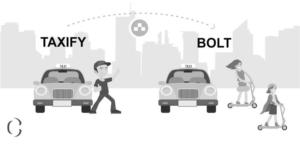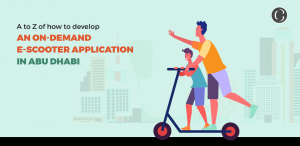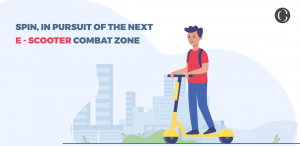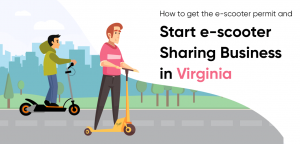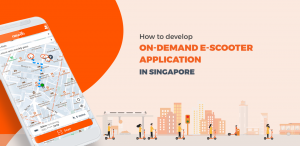With Jump dropping e-bikes across Melbourne, the market of e-bike app development is anticipated to heat up. Develop an e-bike app like Jump and compete bravely with e-scooter apps
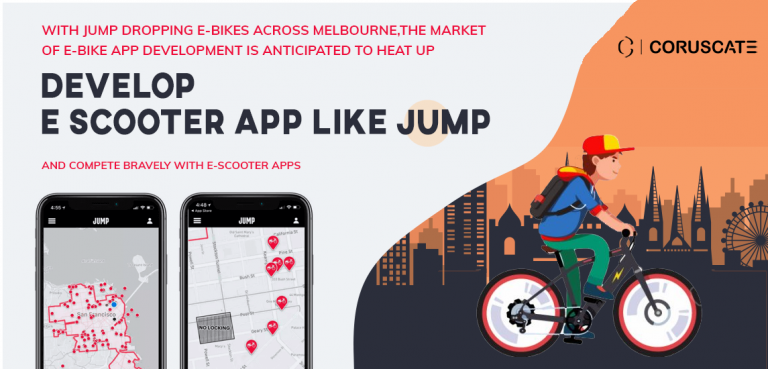
Australia, which has been hit very hard by global warming, is now finally allowing micro-mobility startups to drop eco-friendly electric micro-mobility vehicles. According to recent news published in The Guardian, the Uber-owned bike-sharing company, Jump, will deploy hundreds of e-bikes on the streets of Melbourne.
The City of Melbourne spokesperson said that Jump will introduce 400 e-bikes across the city of Melbourne in early March. He also confirmed that the bikes will come with an electric motor and helmet.
This news illustrates that the Australian government which has denied many permits over safety concerns now accepts the proven fact that cities need sustainable transportation to cope up with climate change issues.
Many industry experts including the business experts of Coruscate Solutions who have worked with more than 10 micro-mobility startups believe that the launch of the Jump e-bike app in one of the most livable cities of the world will heat up the global e-bike app development market. They are also anticipating that e-bikes will soon take over e-scooters. Why? Let’s find out.
This learning will help you to draft the business plan to jump into the micro-mobility market by developing an e-bike app like Jump. We will also discuss business challenges, user app & admin panel modules and cost to develop an e-bike app like Jump.
E-scooter vs e-bike … the battle defining future of your micro-mobility business
If you have ever ridden e-bike and e-scooter, you must have the idea of the different riding experience and quality these two types of micro-mobility vehicles are offering. An e-bike is undoubtedly more reliable and fun to ride than an e-scooter. But what are those main aspects of e-bikes and e-scooters which actually influence your business?
- Safety
E-scooter is notorious for its safety issues. Tiny wheels and a bit higher center of gravity make it very difficult to handle. And most importantly, many users ride the e-scooters for the first time, directly on the busy street! Such users riding an e-scooter that lacks the basic safety features put their as well as the lives of pedestrians at risk. This is why many city councils don’t allow micro-mobility startups to drop e-scooters on public roads.
Whereas, an e-bike is much safer than the e-scooters. Its large wheels, lower center of gravity, and users’ previous knowledge of handling and riding bikes make it the safest micro-mobility vehicle. And thus, a micro-mobility startup owning e-bikes in the fleet can easily acquire the permit.
- Acquisition cost and maintenance cost
Though a small-scale startup can’t shoulder the additional financial burden, it is advisable to populate the fleet with e-bikes. And there are many reasons for it.
An e-bike that costs at least $100 more than an e-scooter cries for less maintenance. By forming a much smaller maintenance team, an entrepreneur can easily recover the extra money he has spent on the e-bike.
An e-bike is also more durable than the e-scooters. Its large body is much stronger than an e-scooter. It can even survive tampering attacks.
So now when you understand the reasons why Jump has decided to drop e-bikes, let’s move ahead and discuss the user app and admin panel modules you have to ask your hired e-bike app development company to integrate into your e-bike app like Jump.
E-bike user app and admin panel modules
Your app is the only medium for the users to be part of your sales life cycle. And your admin panel is also the only medium for you to keep the eagle eye on the users being part of the sales life cycle. So what about paying extra heed to the features of the user app and admin panel?
E-bike user app modules:
- Profile
- Tutorial
- E-bike discovery
- E-bike booking
- E-bike group booking
- E-bike unlocking/locking
- Fare
- Ride information
- Payment
- Ride history
- Customer service
E-bike admin panel modules:
- User management
- Rider management
- Vehicle management
- Ride management
- Payment management
- Dispute management
- Fare management
You aren’t done yet. You also need to make yourself familiar with the challenges associated with Jump-like e-bike sharing business.
Challenges associated with Jump-like e-bike sharing business
Unfortunately, the market is treating both e-bike sharing business and e-scooter sharing business in the same way. Thus, e-bike sharing businesses are facing the same problems e-scooter sharing businesses are facing. However, one of the benefits of this unwanted fusion is that we’ve already discovered the ways to lock horns with these challenges!
- Customer acquisition
Though big players claim that they have attracted many users, it has always been an uphill battle for new micro-mobility startups to acquire the users, especially in cities like Melbourne where public transportation is completely free in downtown and buses are connecting remote areas with the nearest metro train stations.
- Manpower
An e-bike sharing business is a resource-heavy business and to manage those resources, you need manpower. For instance, you need a city relation team which maintains healthy relations with cities, you also need a team of IoT engineers who can solve both software as well as hardware issues of the e-bike. A team of customer service executives is also needed. Now, imagine the percentage of revenue you have to spend on manpower!
You can read our dedicated blog to know more about the manpower needed to run micro-mobility business and ways to reduce it.
E-bike hardware selection is also a challenge amid the availability of many smart and basic e-bikes. So, now let’s discuss the differences between smart and basic e-bikes and which one you should purchase.
How does an e-bike communicate with a mobile app?
IoT technology is in the heart of the e-bike sharing business. Without it, you can never develop an e-bike app like Jump which shows the locations of all e-bikes and let users unlock e-bikes remotely.
The IoT controller fitted in the e-bike makes it smart. This IoT controller establishes the connection with the backend of the mobile app and shares all information of the e-bike. It also receives the information (commands) from the backend of the mobile app.
You can buy an e-bike that comes with the built-in IoT controller. And if you want to save a few bucks, you can buy the separate IoT controllers and fit them in e-bikes. E-bike app development companies like Coruscate then take care of the connectivity and other technical aspects of the app and IoT controller.
How much does it cost to develop an e-bike app like Jump?
Coruscate is the top e-scooter app development company that has developed 10 e-scooter and e-bike apps for different markets. We accommodate 100+ app developers, designers, IoT engineers, business experts, and legal advisors who all work together to help you deploy your app in the market at a surprisingly fast pace.
Our business experts and legal advisors help you to draft a business plan, get a permit and decide on the business model. Whereas our app developers, designers, and IoT engineers actualize a disruptive e-bike app that satisfies all your financial goals in the best possible ways.
Considering the different requirements of the different startups, we offer 3 approaches to develop an e-bike app.
- We can develop a custom e-bike app with all custom features which costs somewhere between $15000 to $25000.
- The price to develop the clone app of some popular e-bike apps starts from $10000.
- And the subscription plan of the white label e-bike app solution starts from just $500.
Are you still confused? Contact us, talk to our business expert and solve every query you have. You will be rewarded with free e-bike app demo and free consultation.



